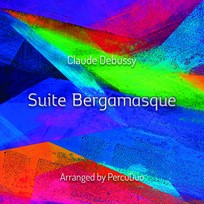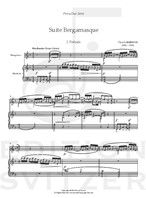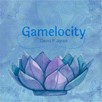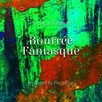
Suite Bergamasque
Composer: Claude Debussy / arr. PercuDuo
Instrument: Vibraphone and Marimba
Level: Intermediate/Advanced
Published: 2016
Price: €28.00
Item details
-
Description +
-
Arranged by PercuDuo
Duration: 10 min.
Damien PETITJEAN, soloist of Paris National Opera Orchestra and Philippe LIMOGE, percussion professor in Montpellier, met when they were teenagers in a french summer academy. Few years later, they were both students with Mr Jacques Delécluse in Paris Conservatoire National Supérieur de Musique. The story of PercuDuo begun, a story of friendship through the passion of music.
« Acousticks » is the first CD of PercuDuo. It is also a long term project based on transcriptions of piano pieces for keyboards percussion instruments, vibraphone and marimba. These instruments are complementary and their combination gives a huge harmonical variety. Then the challenge was to always be as close as possible with the composer's idea of the sound.
Damien Petitjean and Philippe Limoge worked first to find the most appropriate repertoire. After trying many compositions, they found a well-balanced program covering a large period of music. From Jean Sebastien Bach's « Suite Française » to George Gerswhin's « Rapsody in Blue », « Acousticks » also explores great piano composer's like Felix Mendelssohn. It keeps a large part for French music through Maurice Ravel (« Pavane pour une Infante Défunte »), Emmanuel Chabrier (« Bourrée Fantasque ») and Claude Debussy (« Suite Bergamasque »).
Claude Debussy, with his impressionist music, offers colours that are finely reproduced by the vibraphone and the marimba. « Suite Bergamasque » is one of his most famous composition. It was published in 1905. The four movements are very contrasted. This piece is a real journey, going from joy in the Prelude to an humoristic Menuet, finishing on a Passepied also funny, without relationship with the dance as named.
The most known movement is the « Clair de Lune » written in 1890, very expressive, masterwork of tenderness and sweetness. This piece is really characteristic of the impressionist movement in arts that took place in France at this period.
This arrangement is made to be performed with a 4 octavas vibraphone and 5 octavas marimba.
Recorded by PercuDuo on CD « Acousticks », (Polymnie POL 210 372).
More information on www.percuduo.com.
-
-
Instrumentation +
-
Vibraphone and Marimba
-
-
About the composer +
-
Claude-Achille Debussy (22 August 1862 – 25 March 1918) was a French composer. Along with Maurice Ravel, he was one of the most prominent figures associated with Impressionist music, though he himself disliked the term when applied to his compositions. He was made Chevalier of the Legion of Honour in his native France in 1903. Debussy was among the most influential composers of the late 19th and early 20th centuries, and his use of non-traditional scales and chromaticism influenced many composers who followed.
Debussy's music is noted for its sensory content and frequent usage of nontraditional tonalities. The prominent French literary style of his period was known as Symbolism, and this movement directly inspired Debussy both as a composer and as an active cultural participant.
-
-
Reviews +
-
Review (Percussive Notes, June 2020)
The four movements that make up Debussy’s “Suite Bergamasque” are sweet and pleasing to hear. This arrangement by PercuDuo distributes the flowing, playful material between two performers. There are virtuosic moments in the work, but a fair amount of the difficulty comes from the ever-involving nature of the musical material. Performers pass off lines to each other, moving from melody to accompaniment frequently and suddenly.
The keyboard percussion instruments are used effectively in this work. No pedaling is indicated for the vibraphone, so different performers will likely have their own interpretations. Four mallets are required throughout. Performers should note that a 4-octave vibraphone is required. The arrangers have not provided alterations for a standard 3-octave vibraphone, and so many of the extended- range parts do seem required.
Both parts are demanding and gratifying to perform. A pair of movements would be appropriate for a degree recital. There are quite a few notes, and the lilting nature of Debussy’s material can make some of this sound less challenging than it is. It is certainly a worthy addition to the keyboard percussion repertoire.
—Jamie Wind Whitmarsh
-
-
Credits +
-
Front Cover layout: Gaia Gomes
Engraving: PercuDuo
Printed in Copenhagen,
Denmark www.editionsvitzer.com
-






